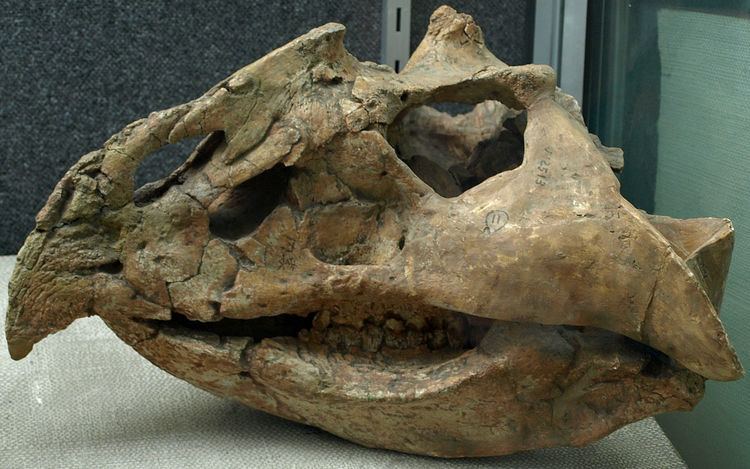Region Asia | ||
 | ||
Named for Bayan Mandahu Formation, Inner Mongolia | ||
The Bayan Mandahu Formation (or Wulansuhai Formation) is a geological unit of "redbeds" located near the village of Bayan Mandahu in Inner Mongolia, China Asia (Gobi Desert) and dates from the late Cretaceous Period. Laid down in the Campanian, it is dated somewhat uncertainly to between 75-71 mya (million years ago).
Contents
The paleoenvironment it preserves was semi-arid and characterized by alluvial (stream-deposited) and eolian (wind-deposited) sediments. The formation is known for its vertebrate fossils, most of which are preserved in unstructured sandstone, indicating burial by wind-blown sandstorms.
Fauna
The fauna of the Bayan Mandahu is very similar in composition to the nearby Djadochta Formation, and the two may have been deposited at roughly the same time. These two formations share many of the same genera, but differ in the makeup of species. For example, the most common mammal in the Djadochta is Kryptobaatar dashzevegi, while in the Bayan Mandahu, it is the closely related Kryptobaatar mandahuensis. Similarly, the dinosaur fauna of the Djadochta includes Protoceratops andrewsi and Velociraptor mongoliensis, while the Bayan Mandahu contains Protoceratops hellenikorhinus and Velociraptor osmolskae.
Lizards
An amphisbaenian species is known from the formation. An iguanian species is known from the formation.
Mammals
A taeniolabidoidea multituberculate is known from the formation.
